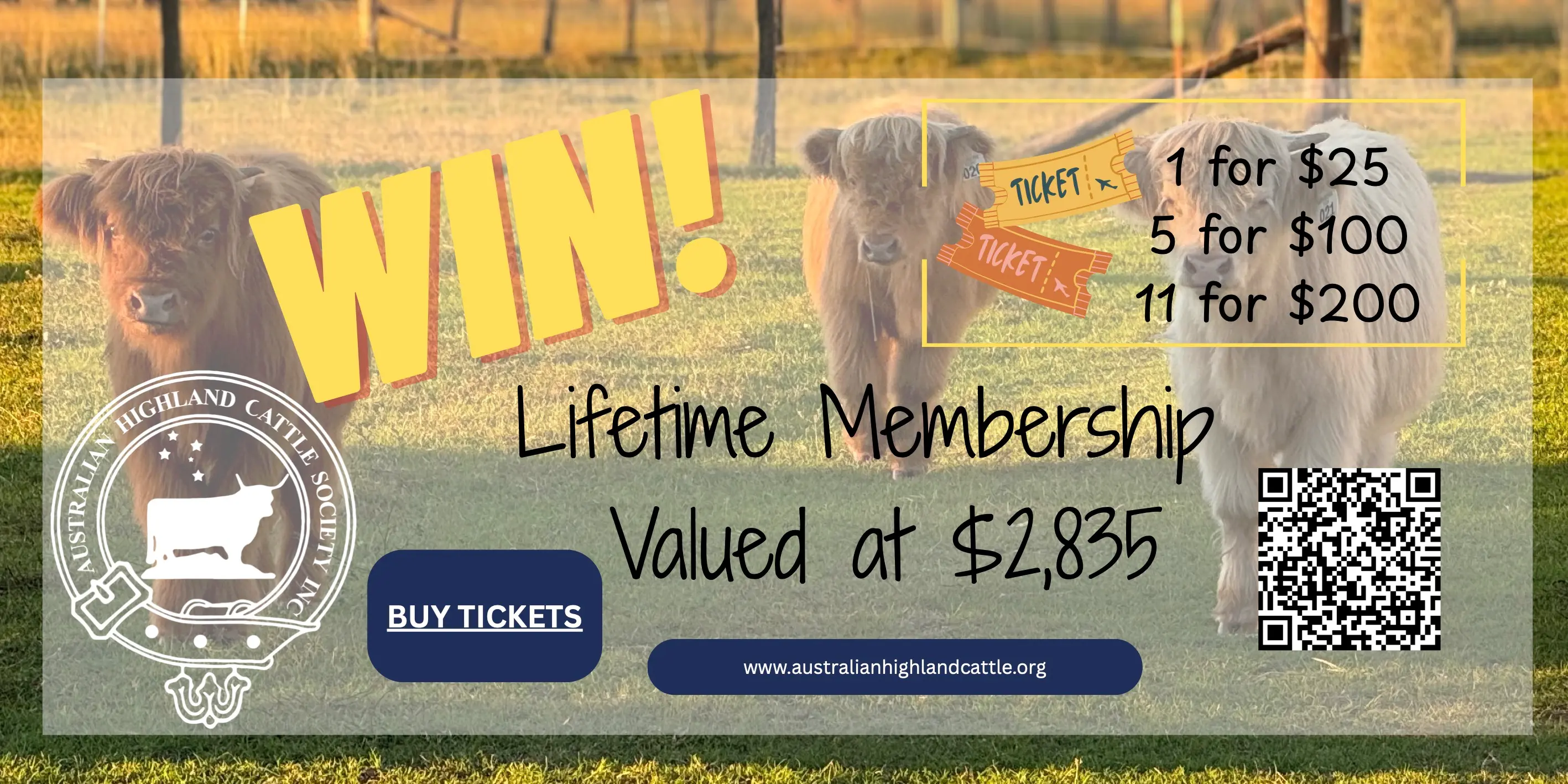.jpg)









Sometimes referred to as "The Grand Old Breed", Highlands are arguably one of the most majestic breeds, easily recognisable and once seen, can never be forgotten.
Despite the long horns and unusual appearance, the Highland is considered an even-tempered animal - bulls and cows. They can be broken to lead as easily as any other breed, even more so because of the Highland's superior intelligence.
Highland cattle adapt well in the varying Australian climates. Cold weather and snow have very little effect on them, and in their summer coat - although they appreciate shade - they are able to tolerate the harsh Australian heat.
They have developed into an efficient and versatile beef breed. As natural foragers, they are largely self-sufficient and require minimal maintenance, and in more recent years breeders have recognised the inherent qualities of Highland cattle as a beef breed because of their ability to efficiently convert rough fodder into low fat, high quality beef.
Naturally Reared, Naturally Tasty.
The considerable attributes of Highland Cattle make them the first choice to produce specialist beef. Pure Highland Beef is slow-maturing, lean, firm and very low in fat, while at the same time rich in protein and iron. It is unsurpassed for flavour, tenderness and juiceness that comes from having just the right amount of marbling through the meat to give that succulent flavour so typical of old-fashioned traditional beef.
The Breed Ideal (or Breed Standard) represents what is considered to be the perfect conformation traits of a Highland. It is important for breeders to be familiar with and consider the breed ideal to protect the integrity and standard of the Highland cattle breed in Australia.
Below is an overview of the Highland Breed Ideal.
The head, horns, neck, body, hindquarters and legs should be in perfect balance.
The hair between the horns, known as the dossan, should be wide, long - reaching to the muzzle - and thick.
The horns in the bull should be strong, but not too heavy (heavy horns are undesirable), and come out of the head level, curving slightly forward.
The neck should be of good length, allowing for natural lift to the head. A bull should show masculinity but this development should not be excessive at an early age.
From the shoulder back, the top of the animal should be straight, with no hollows, and as wide as possible - particularly between the hooks, or hips, and should not be too hard, which indicates bone on which no flesh will develop.
The legs should be sturdy and straight with good bone and a good covering of hair, and the animal should be seen to be walking freely and easily, the legs not brushing against each other but set well outside the body.
Highland cattle have two coats of hair. The outer coat is long and strong and is presumably meant by nature to keep the winter weather away from the skin. The under coat is soft and fluffy to keep their bodies warm.
Bulls' sheaths should not be loose or pendulous. The scrotum should contain two testicles well let down of good and even size.
The udder on females should not be fleshy, coming well forward in line with the body and well up behind; with four teats well apart and of even moderate size.
The head, horns, neck, body, hindquarters and legs should be in perfect balance.
The hair between the horns, known as the dossan, should be wide, long - reaching to the muzzle - and thick.
The horns in the bull should be strong, but not too heavy (heavy horns are undesirable), and come out of the head level, curving slightly forward.
The neck should be of good length, allowing for natural lift to the head. A bull should show masculinity but this development should not be excessive at an early age.
From the shoulder back, the top of the animal should be straight, with no hollows, and as wide as possible - particularly between the hooks, or hips, and should not be too hard, which indicates bone on which no flesh will develop.
The legs should be sturdy and straight with good bone and a good covering of hair, and the animal should be seen to be walking freely and easily, the legs not brushing against each other but set well outside the body.
Highland cattle have two coats of hair. The outer coat is long and strong and is presumably meant by nature to keep the winter weather away from the skin. The under coat is soft and fluffy to keep their bodies warm.
Bulls' sheaths should not be loose or pendulous. The scrotum should contain two testicles well let down of good and even size.
The udder on females should not be fleshy, coming well forward in line with the body and well up behind; with four teats well apart and of even moderate size.







Highland cattle have a strong and vast history, dating back to 1829 when the first Highland Cattle were imported into Australia by various Scottish migrants. Scroll through our timeline that features significant events in our Australian history that have led the breed to where it is today.

Become a member of the Australian Highland Cattle Society. You'll have access to exclusive resources, community support, flexible membership options, all while supporting Highland Cattle in Australia.